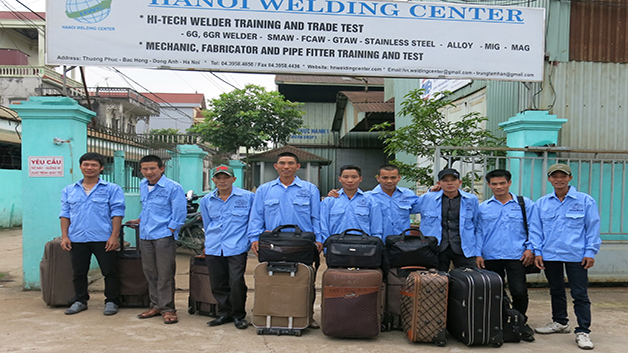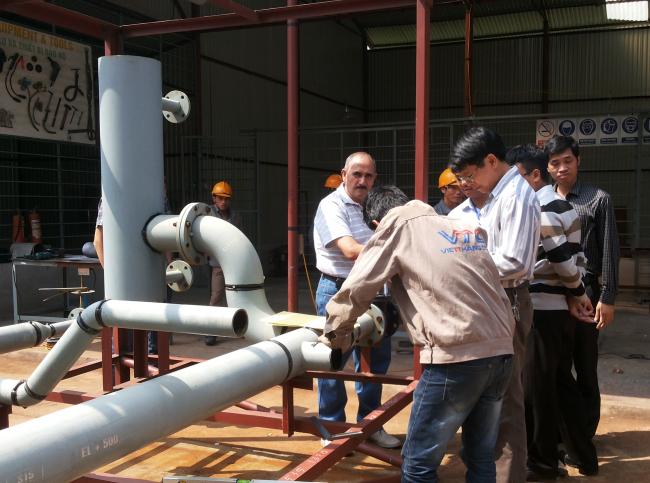- Home
- --- Services
- --- Trainning services
Training services
We are able to train students to get certificate and introduce jobs after finishing the course. Depending on expectation of students, we can send them to work in projects abroad or domestic.
In order to work well, students must have knowledge about welding and its specifics and contends include:
What is Welding?
Welding is the joining of metals. What welding does is join metals or other materials at their molecular level with the technology we have at the moment. I say “at the moment” because welding technology is always changing, and with so many military forces relying on it to make their defense products, there are welding processes we are yet to hear about.
What we know about modern welding is that there are four components to a weld. The four components are the metals themselves, a heat source, filler material, and some kind of shield from the air. The welding process works like this. The metal gets heated to its melting point, at the same time there is some sort of shielding from the air to protecting it, and then a filler metal is added to the area that needs to be joined ultimately producing a single piece of metal.
The Most Common Welding Processes
Welding today has four popular processes.
These processes have not always been the most popular in the past but have risen as the favorite of engineers and welders for cost and practical reasons. In the real world (not a text book) these are the welding processes that have the most demand job wise. Not sure? Pick up any newspaper right now and look at the employment ads. These are the types of welders most employers need!
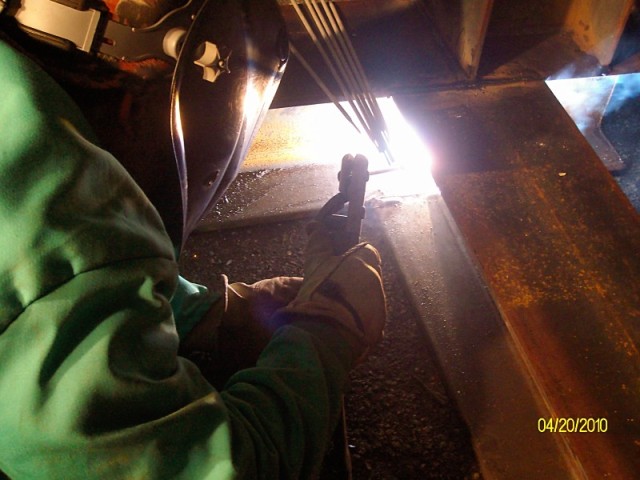
Shielded metal arc welding / Stick welding / or SMAWuses a rod or in the technical terms it is called an electrode that has a powder coating (technically a flux) on it that burns or melts to create a shield from oxygen, and some rods have filler metal added to the coating to speed up the welding process.
On a scale of 1 to 3 for difficulty, SMAW is a 2. Stick welding is the most common, but from a visual point of view it is harder to determine how much filler metal is added to the joint because the shielding on the rod produces a slag that does not allow you to see the weld directly while welding. Afterwards, you chip off the slag to see the weld. Stick welding is also the best process to weld out doors with. The flux shields the weld from oxygen and is exceptionally good when it’s windy.
MIG / Metal Inert Gas Welding / Gas Metal Arc Welding / GMAW
Metal inert gas welding / MIG is a process that uses a wire spool
to feed wire to the joint and has a bottle of gas that flows from the machine to the welding handle to protect the weld from the air around it. The best description in a comparison point of viewis a bicycle brake cable that has a wire running through that feeds continuously to the joint. But this cable also has a gas flowing through it that shields that weld from the air.
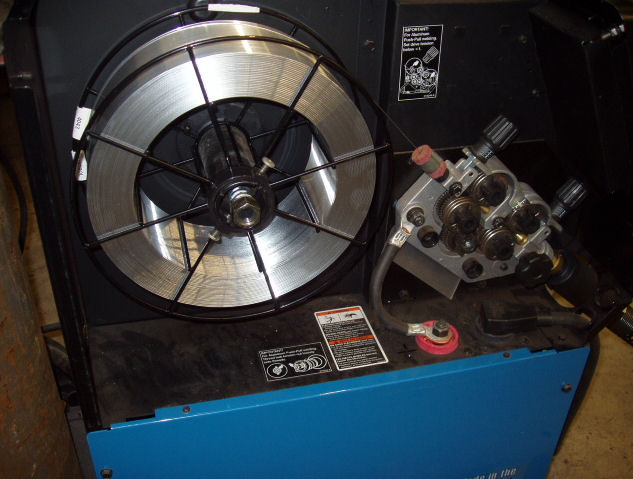
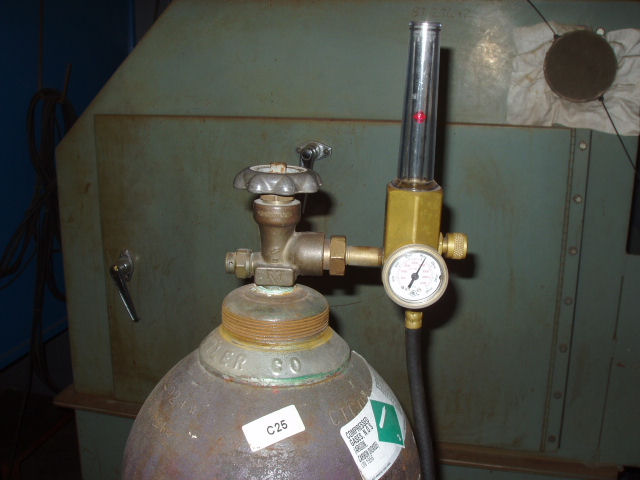
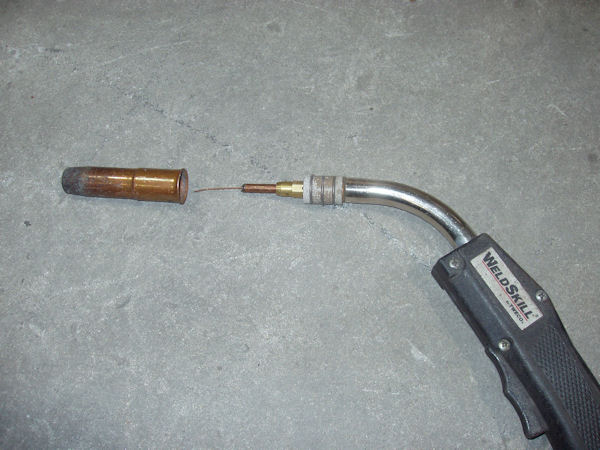
On a scale of 1 to 3 for difficulty while MIG welding it is a1.Machine set-up is a 2. MIG is an easy process to weld with but machine set-up can be difficult. When MIG welding the size of the weld is what you see and it is basically a point and shoot operation. The down side is it is a terrible welding process if you are out doors due to the shielding coming from a bottle of gas that the wind can just blow away at any moment.
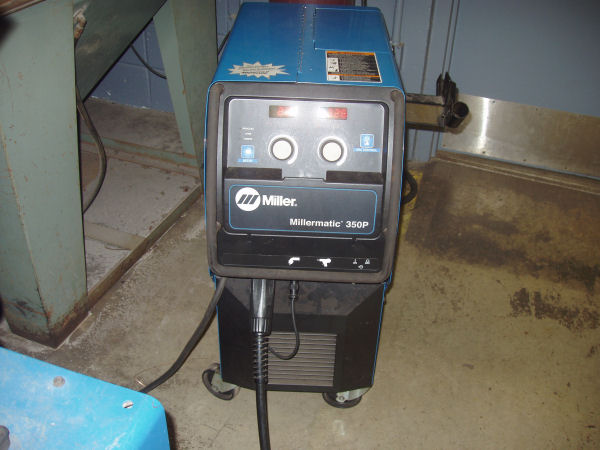
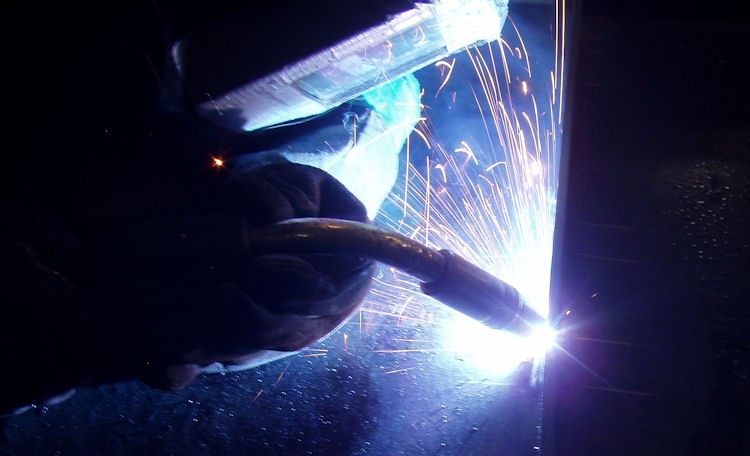
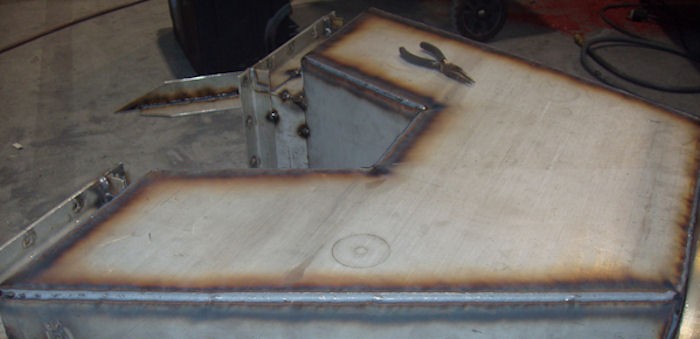
Flux Core Arc Welding / FCAW
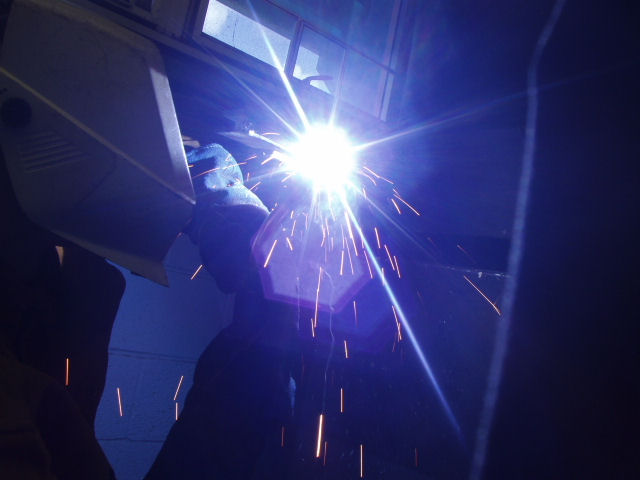
Flux core arc welding / FCAW is the same machine as the MIG welder but the difference is it either uses just the wire with a flux in the center of it or a combination of the flux in the center of the wire and a shielded gas from a bottle.
On a scale of 1 to 3 for difficulty FCAW is a 2. Flux core welding is mostly used outside when there are heavy production demands for the amount of weld done per hour. This is commonly used in shipyards where a lot of weld is required and it is windy.
TIG / Tungsten Inert Gas Welding
Tungsten arc welding / TIG is a torch that has a gas flowing through it with a non-consumable rod made of tungsten that heats the metal and the filler metal is held in the other hand and manually added when needed. The non-consumable rod is only a rod that creates the arc to heat the metal. It does not add to the welding filler material itself.
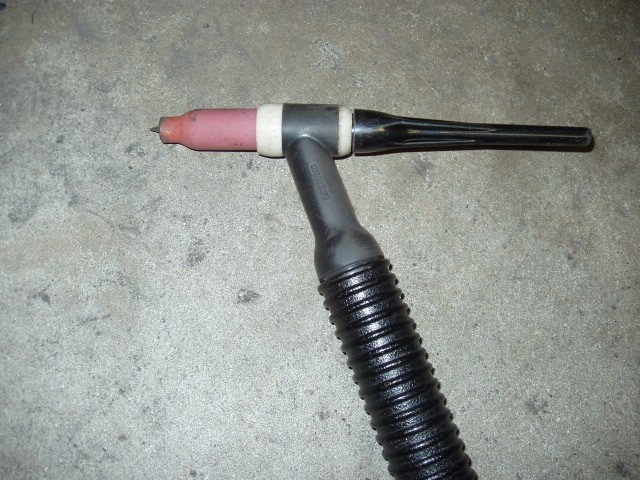
TIG torch 250 amp
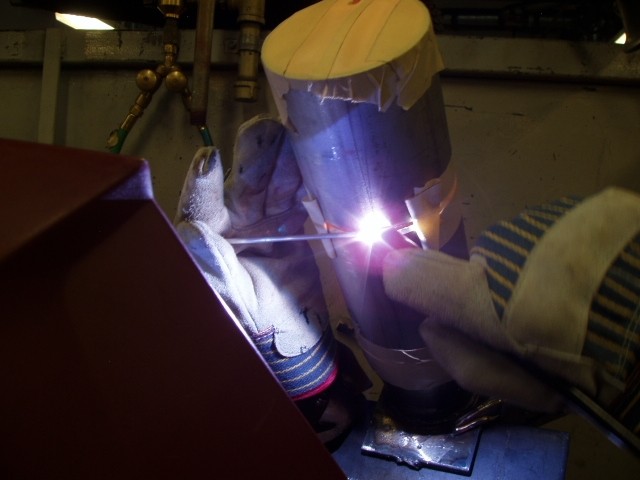
TIG welding stainless steel
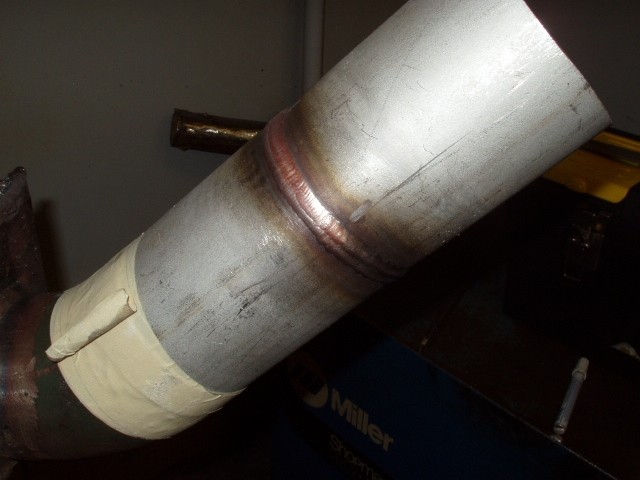
6G Pipe testing position
On a scale of 1 to 3 for difficulty TIG is a 3. You are heating the joint with one hand and the other needs to add the filler metal. The huge upside is total control of the weld and it is the process of choice for exotic metals and joints that needs the best weld possible.
Differences in These Welding Processes
With all popular welding processes it’s pretty much the same basic principle, heat, shielding from the air, and filler metal added to the joint! There are two main differences with today’s welding processes.
Difference in electrodes
The first main difference is that some processes feed the filler metal with some sort of wire using a mechanical feed like a wheel or spool of wire. These are considered semi-automatic. The second is an electrode that burns down until it is finished or the processes that filler metal is added manually with the other hand. These are considered manual processes.



Difference in Shielding
The second difference is the way the shielding from oxygen is created. MIG, sometimes Flux Core, and TIG use a bottle of gas usually containing all or a percentage of argon gas. While stick welding uses a chemical powder on the rod or electrode that burns and shields the weld. Also, this same chemical powder may contain filler metal to make a faster weld.
Welding Production Speed
When it comes to welding production, meaning how many pounds of wire is applied in a day, MIG and Flux Core take the prize. Second is Stick welding. Finally, there is TIG for totally precise welds that can be done on any weldable metal
Many manufactures who are metal fabricators choose the proper welding process by weighing the minimum quality of the weld they need, versus how fast a weld can be made. Yeah, money, money, money!
Choosing a Welding Process
With MIG or Flux Core (most common in welding shops and shipyards), welding of the metals is very fast because the metal comes on a spool and they are machine driven as fast as needed. Unfortunately, because the wire is feed through a cable much like the brakes of a bicycle, there is a limit how far you can go with the welder distance wise. The further you go from the wire feed, the more friction the wire passing through the cable has. This causes some unavoidable problems. When it comes down to the most welds per hour, MIG and Flux Core welding take the prize!
Secondly, Stick welding can be a fast-paced welding process if the welding rod is big enough or has filler metal added to the coating. The main attraction of Stick welding is that it works great outdoors and requires no bottles of gasses to shield the weld. Additionally, Stick welding machines have long cords and can weld as long as the cord is long, and short enough to keep the electricity at the proper level. Stick welders are the most cost efficient for someone who just needs to do some metal repairs or enjoys welding is their hobby. Stick welding is the most trouble free and easy to set up.
Finally TIG welding, the most respected and valued of all welding processes, is slow but the best for weld quality wise. TIG has the flexibility to take the TIG torch as far as you can go with it just like a stick welder. The down side is you need a bottle of gas to make it work and wind can cause trouble. Typically, many Stick welding machines are also TIG welders. You can simply add a TIG torch and bottle of gas to use it as a TIG welder. The upside is the best quality weld with any metal.
Welding Polarity and Voltage Type
Understanding welding polarity and voltage type is important since the most popular welding process today use electricity to produce the heat needed. Welding also uses different types of electricity depending on the welding process itself and what the welding filler material manufactures recommendations. There are two types of electricity used in welding D/C (direct current) like your car battery, and A/C (alternating current) like the power in your home. There are three types of welding polarity.
Almost any metal can be welded depending on the process and conditions. The people who determine what and how the metals can be welded are called metallurgists or welding engineers depending on whom you ask. The three most commonly welded metals are steel, stainless steel, and aluminum
In order to work well, students must have knowledge about welding and its specifics and contends include:
What is Welding?
Welding is the joining of metals. What welding does is join metals or other materials at their molecular level with the technology we have at the moment. I say “at the moment” because welding technology is always changing, and with so many military forces relying on it to make their defense products, there are welding processes we are yet to hear about.
What we know about modern welding is that there are four components to a weld. The four components are the metals themselves, a heat source, filler material, and some kind of shield from the air. The welding process works like this. The metal gets heated to its melting point, at the same time there is some sort of shielding from the air to protecting it, and then a filler metal is added to the area that needs to be joined ultimately producing a single piece of metal.
The Most Common Welding Processes
Welding today has four popular processes.
These processes have not always been the most popular in the past but have risen as the favorite of engineers and welders for cost and practical reasons. In the real world (not a text book) these are the welding processes that have the most demand job wise. Not sure? Pick up any newspaper right now and look at the employment ads. These are the types of welders most employers need!
• Shielded metal arc welding / Stick welding / SMAW
• Metal inert gas / MIG
• Flux core arc welding / FCAW
• Tungsten inert gas welding / TIG
• Metal inert gas / MIG
• Flux core arc welding / FCAW
• Tungsten inert gas welding / TIG
All of the above processes require electricity to create the heat needed to weld metals. The main difference between all of these processes is the way the filler metal is added and how the weld is shielded from the air.
Shielded Metal Arc Welding / Stick welding / SMAW
Shielded metal arc welding / Stick welding / or SMAWuses a rod or in the technical terms it is called an electrode that has a powder coating (technically a flux) on it that burns or melts to create a shield from oxygen, and some rods have filler metal added to the coating to speed up the welding process.
On a scale of 1 to 3 for difficulty, SMAW is a 2. Stick welding is the most common, but from a visual point of view it is harder to determine how much filler metal is added to the joint because the shielding on the rod produces a slag that does not allow you to see the weld directly while welding. Afterwards, you chip off the slag to see the weld. Stick welding is also the best process to weld out doors with. The flux shields the weld from oxygen and is exceptionally good when it’s windy.
MIG / Metal Inert Gas Welding / Gas Metal Arc Welding / GMAW
Metal inert gas welding / MIG is a process that uses a wire spool
to feed wire to the joint and has a bottle of gas that flows from the machine to the welding handle to protect the weld from the air around it. The best description in a comparison point of viewis a bicycle brake cable that has a wire running through that feeds continuously to the joint. But this cable also has a gas flowing through it that shields that weld from the air.



On a scale of 1 to 3 for difficulty while MIG welding it is a1.Machine set-up is a 2. MIG is an easy process to weld with but machine set-up can be difficult. When MIG welding the size of the weld is what you see and it is basically a point and shoot operation. The down side is it is a terrible welding process if you are out doors due to the shielding coming from a bottle of gas that the wind can just blow away at any moment.



Flux Core Arc Welding / FCAW

Flux core arc welding / FCAW is the same machine as the MIG welder but the difference is it either uses just the wire with a flux in the center of it or a combination of the flux in the center of the wire and a shielded gas from a bottle.
On a scale of 1 to 3 for difficulty FCAW is a 2. Flux core welding is mostly used outside when there are heavy production demands for the amount of weld done per hour. This is commonly used in shipyards where a lot of weld is required and it is windy.
TIG / Tungsten Inert Gas Welding
Tungsten arc welding / TIG is a torch that has a gas flowing through it with a non-consumable rod made of tungsten that heats the metal and the filler metal is held in the other hand and manually added when needed. The non-consumable rod is only a rod that creates the arc to heat the metal. It does not add to the welding filler material itself.

TIG torch 250 amp

TIG welding stainless steel

6G Pipe testing position
On a scale of 1 to 3 for difficulty TIG is a 3. You are heating the joint with one hand and the other needs to add the filler metal. The huge upside is total control of the weld and it is the process of choice for exotic metals and joints that needs the best weld possible.
Differences in These Welding Processes
With all popular welding processes it’s pretty much the same basic principle, heat, shielding from the air, and filler metal added to the joint! There are two main differences with today’s welding processes.
Difference in electrodes
The first main difference is that some processes feed the filler metal with some sort of wire using a mechanical feed like a wheel or spool of wire. These are considered semi-automatic. The second is an electrode that burns down until it is finished or the processes that filler metal is added manually with the other hand. These are considered manual processes.



Difference in Shielding
The second difference is the way the shielding from oxygen is created. MIG, sometimes Flux Core, and TIG use a bottle of gas usually containing all or a percentage of argon gas. While stick welding uses a chemical powder on the rod or electrode that burns and shields the weld. Also, this same chemical powder may contain filler metal to make a faster weld.
Welding Production Speed
When it comes to welding production, meaning how many pounds of wire is applied in a day, MIG and Flux Core take the prize. Second is Stick welding. Finally, there is TIG for totally precise welds that can be done on any weldable metal
Many manufactures who are metal fabricators choose the proper welding process by weighing the minimum quality of the weld they need, versus how fast a weld can be made. Yeah, money, money, money!
Choosing a Welding Process
With MIG or Flux Core (most common in welding shops and shipyards), welding of the metals is very fast because the metal comes on a spool and they are machine driven as fast as needed. Unfortunately, because the wire is feed through a cable much like the brakes of a bicycle, there is a limit how far you can go with the welder distance wise. The further you go from the wire feed, the more friction the wire passing through the cable has. This causes some unavoidable problems. When it comes down to the most welds per hour, MIG and Flux Core welding take the prize!
Secondly, Stick welding can be a fast-paced welding process if the welding rod is big enough or has filler metal added to the coating. The main attraction of Stick welding is that it works great outdoors and requires no bottles of gasses to shield the weld. Additionally, Stick welding machines have long cords and can weld as long as the cord is long, and short enough to keep the electricity at the proper level. Stick welders are the most cost efficient for someone who just needs to do some metal repairs or enjoys welding is their hobby. Stick welding is the most trouble free and easy to set up.
Finally TIG welding, the most respected and valued of all welding processes, is slow but the best for weld quality wise. TIG has the flexibility to take the TIG torch as far as you can go with it just like a stick welder. The down side is you need a bottle of gas to make it work and wind can cause trouble. Typically, many Stick welding machines are also TIG welders. You can simply add a TIG torch and bottle of gas to use it as a TIG welder. The upside is the best quality weld with any metal.
Welding Polarity and Voltage Type
Understanding welding polarity and voltage type is important since the most popular welding process today use electricity to produce the heat needed. Welding also uses different types of electricity depending on the welding process itself and what the welding filler material manufactures recommendations. There are two types of electricity used in welding D/C (direct current) like your car battery, and A/C (alternating current) like the power in your home. There are three types of welding polarity.
• D/C electrode positive where the electrode is positive, the electricity flows from the metal to the welding rod.
• D/C electrode negative (the most common) when the electrode is negative and the electricity flows from the rod to the metal.
• A/C alternating current where the polarity changes from positive to negative many times in a second. Some welding machines offer A/C current, but it is the least commonly used in the welding field.
Weld ability of metals• D/C electrode negative (the most common) when the electrode is negative and the electricity flows from the rod to the metal.
• A/C alternating current where the polarity changes from positive to negative many times in a second. Some welding machines offer A/C current, but it is the least commonly used in the welding field.
Almost any metal can be welded depending on the process and conditions. The people who determine what and how the metals can be welded are called metallurgists or welding engineers depending on whom you ask. The three most commonly welded metals are steel, stainless steel, and aluminum
Copyright by Vietnam Welder - Vietnam Manpower
Address: Thuong Phuc Village, Bac Hong Commune, Dong Anh District, Hanoi, Vietnam
Tel: (+84) 24-3958.4656 Fax: (+84) 24-3958.4436
Email: vietnamwelder@hotmail.com Website: http://vietnamwelder.vn
Tel: (+84) 24-3958.4656 Fax: (+84) 24-3958.4436
Email: vietnamwelder@hotmail.com Website: http://vietnamwelder.vn



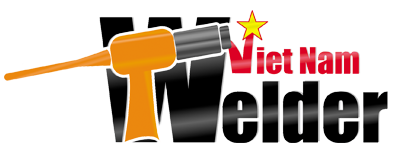


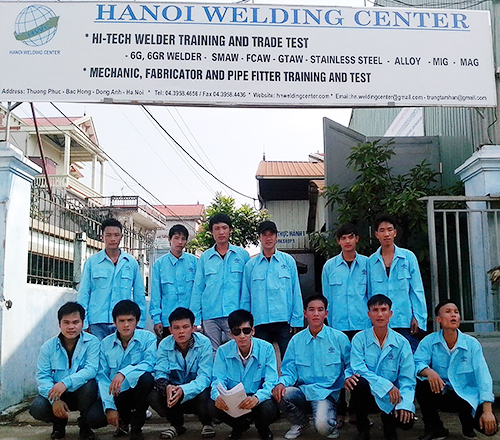
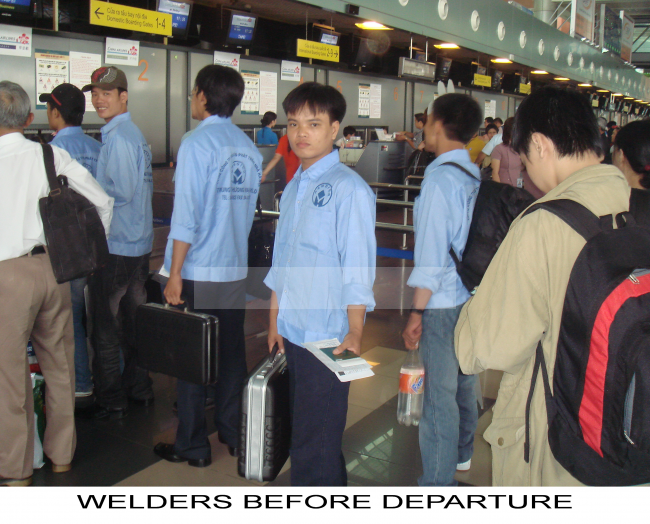

.jpg)



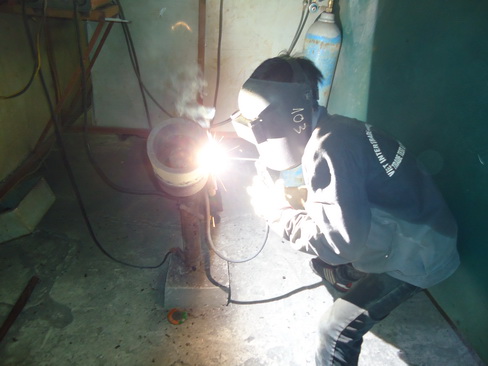

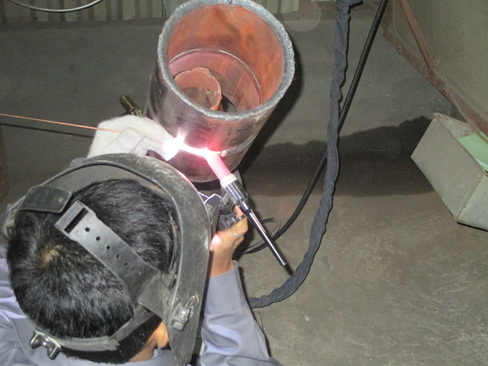





.jpg)


.jpg)
.jpg)
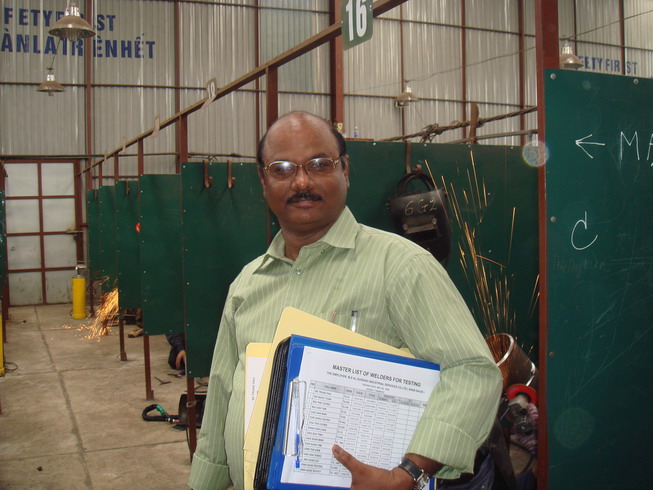

.jpg)
